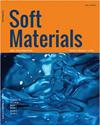研究了磨碎轮胎橡胶在天然橡胶混杂复合材料中作为增强填料的效果
IF 1.4
4区 材料科学
Q4 MATERIALS SCIENCE, MULTIDISCIPLINARY
引用次数: 0
摘要
摘要本文研究了天然橡胶(NR)/三元乙丙橡胶(EPDM)或天然橡胶(NR)/氯丁橡胶(CR)复合材料与地面轮胎橡胶(GTR)共混物不同配比的影响。在双辊轧机和液压机上,以5份三元乙丙橡胶(EPDM)或5份氯纶(CR)和不同比例的GTR(0,10,20,30和40phr)为原料,制备了NR (95 phr)复合材料。在5phr下添加尼龙6,可以提高NR/EPDM和NR/CR复合材料的界面附着力。因此,二氧化硅(20 phr)和炭黑(10 phr)被用作这些复合材料的常规填料。对所制备的nr基混杂复合材料的力学性能和固化性能进行了评价,并与对照样品进行了比较。结果表明,NR/EPDM/GTR(95/5/10)的最大拉伸强度、撕裂强度、硬度和杨氏模量分别比对照提高了8%、9.39%、6.35%和18.31%,而NR/CR/GTR(95/5/10)的最大拉伸强度、撕裂强度、硬度和杨氏模量分别比对照提高了17.1%、10.71%、6%和31.72%。NR/EPDM/GTR(95/5/10)的断裂伸长率比对照降低了29.11%,而NR/CR/GTR(95/5/10)的断裂伸长率比对照降低了21.65%。与对照样品相比,加入GTR 10 phr后,两种复合材料的烘烤时间(tS2)和固化时间(tC90)均有所降低,最小扭矩(ML)和最大扭矩(MH)均有所提高。GTR的加入提高了固化复合材料中的硫含量,EDS分析证实了这一点。微观结构和热重分析表明,GTR颗粒分布均匀,与对照材料相比,NR/EPDM/GTR(95/5/10)和NR/CR/GTR(95/5/10)复合材料的热稳定性分别提高了19.6%和21.5%。利用傅里叶变换红外光谱(FTIR)鉴定了复合材料中NR、EPDM、CR和GTR元素的吸收峰。在NR/EPDM复合材料中,玻璃化转变温度(Tg)从- 60.7℃升高到- 58.17℃,而NR/CR复合材料的玻璃化转变温度为- 61.43℃至- 58.96℃。最后,建议加入10 phr的GTR适用于NR与EPDM或CR复合材料。本文章由计算机程序翻译,如有差异,请以英文原文为准。
Investigate the effect of ground tyre rubber as a reinforcement filler in natural rubber hybrid composites
ABSTRACT This paper investigates the effect of various proportions of Ground Tyre Rubber (GTR) blends with Natural Rubber (NR)/Ethylene Propylene Diene Monomer (EPDM) or NR/Chloroprene Rubber (CR) composites. The NR (95 phr) composites were developed with 5 phr of EPDM or 5 phr of CR along with different ratios of GTR (0, 10, 20, 30, and 40 phr) by a two-roll mill and hydraulic press. The interfacial adhesion of NR/EPDM and NR/CR composites was improved with the addition of nylon 6 at 5 phr. Hence, the silica (20 phr) and carbon black (10 phr) were used as conventional fillers in these composites. The mechanical and curing properties of the developed NR-based hybrid composites were evaluated and compared with control samples. It was noted that the maximum tensile strength, tear strength, hardness, and Young’s modulus were increased by 8%, 9.39%, 6.35%, and 18.31% in NR/EPDM/GTR (95/5/10), while for NR/CR/GTR (95/5/10), 17.1%, 10.71%, 6%, and 31.72% over the control sample. The elongation at break was reduced by 29.11% in NR/EPDM/GTR (95/5/10), but for NR/CR/GTR (95/5/10) was 21.65% over the control sample. The cure properties like scorch time (tS2) and cure time (tC90) were decreased, while minimum torque (ML) and maximum torque (MH) were enhanced with the incorporation of GTR 10 phr in both the composites when compared with the control sample. The addition of GTR increased the sulfur in the cured composites, which was confirmed in EDS analysis. Based on the microstructure and thermogravimetric analysis, GTR particles were uniformly distributed, and the thermal stability was increased by 19.6% and 21.5% in NR/EPDM/GTR (95/5/10) and NR/CR/GTR (95/5/10) composites, respectively, over the control sample. The absorption peaks of NR, EPDM, CR, and GTR elements in the developed composite were identified using Fourier Transform Infrared spectroscopy (FTIR). In the NR/EPDM composite, the glass transition temperature (Tg) was increased from −60.7°C to −58.17°C, but for the NR/CR composite, it was −61.43°C to −58.96°C. Finally, the inclusion of 10 phr of GTR was recommended to be suitable for NR with EPDM or CR composites.
求助全文
通过发布文献求助,成功后即可免费获取论文全文。
去求助
来源期刊

Soft Materials
工程技术-材料科学:综合
CiteScore
2.90
自引率
0.00%
发文量
21
审稿时长
2.2 months
期刊介绍:
Providing a common forum for all soft matter scientists, Soft Materials covers theory, simulation, and experimental research in this rapidly expanding and interdisciplinary field. As soft materials are often at the heart of modern technologies, soft matter science has implications and applications in many areas ranging from biology to engineering.
Unlike many journals which focus primarily on individual classes of materials or particular applications, Soft Materials draw on all physical, chemical, materials science, and biological aspects of soft matter. Featured topics include polymers, biomacromolecules, colloids, membranes, Langmuir-Blodgett films, liquid crystals, granular matter, soft interfaces, complex fluids, surfactants, gels, nanomaterials, self-organization, supramolecular science, molecular recognition, soft glasses, amphiphiles, foams, and active matter.
Truly international in scope, Soft Materials contains original research, invited reviews, in-depth technical tutorials, and book reviews.
 求助内容:
求助内容: 应助结果提醒方式:
应助结果提醒方式:


